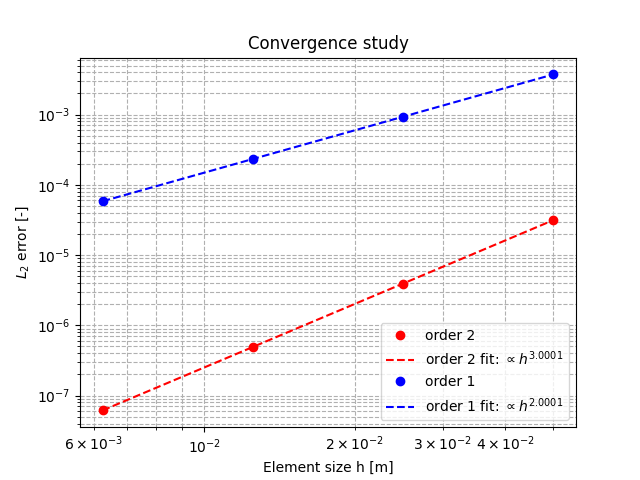Example 5: MMS benchmark¶
Files¶
- Comprehensive test file: main.cpp
- Reference results for comparison: convergence_output_ref.csv
Statement of the problem¶
This test is taken from Zhang & al.1. It consists of spatial convergence analysis based on a manufactured solution benchmark.
The domain is a square
where is the phase indicator, the generalized chemical potential and the derivative against of the potential defined by:
In equation (1), is the source term allowing the exact solution:
Initial condition¶
The initial condition is given by:
For this test, is set to .
Parameters used for the test¶
For this test, all parameters are equal to one.
| Name | Description | Symbol | Value |
|---|---|---|---|
mob |
mobility coefficient | ||
lambda |
energy gradient coefficient | ||
omega |
depth of the double-well potential |
Boundary conditions¶
Neumann boundary conditions are prescribed on the top and bottom of the domain:
Dirichlet boundary conditions are prescribed on the right and left of the domain:
Numerical scheme¶
- Time integration: Euler Implicit over the interval with a time-step .
- Spatial discretization for convergence analysis: uniform grid with nodes in each spatial direction, with and finite elements
- Newton solver: relative tolerance , absolute tolerance
- Iterative solver: HYPRE_GMRES
- Preconditioner: HYPRE_ILU
Results¶
Figures 1 shows the results of convergence analysis with and .

-
Liangzhe Zhang, Michael R Tonks, Derek Gaston, John W Peterson, David Andrs, Paul C Millett, and Bulent S Biner. A quantitative comparison between c0 and c1 elements for solving the cahn–hilliard equation. Journal of Computational Physics, 236:74–80, 2013. ↩